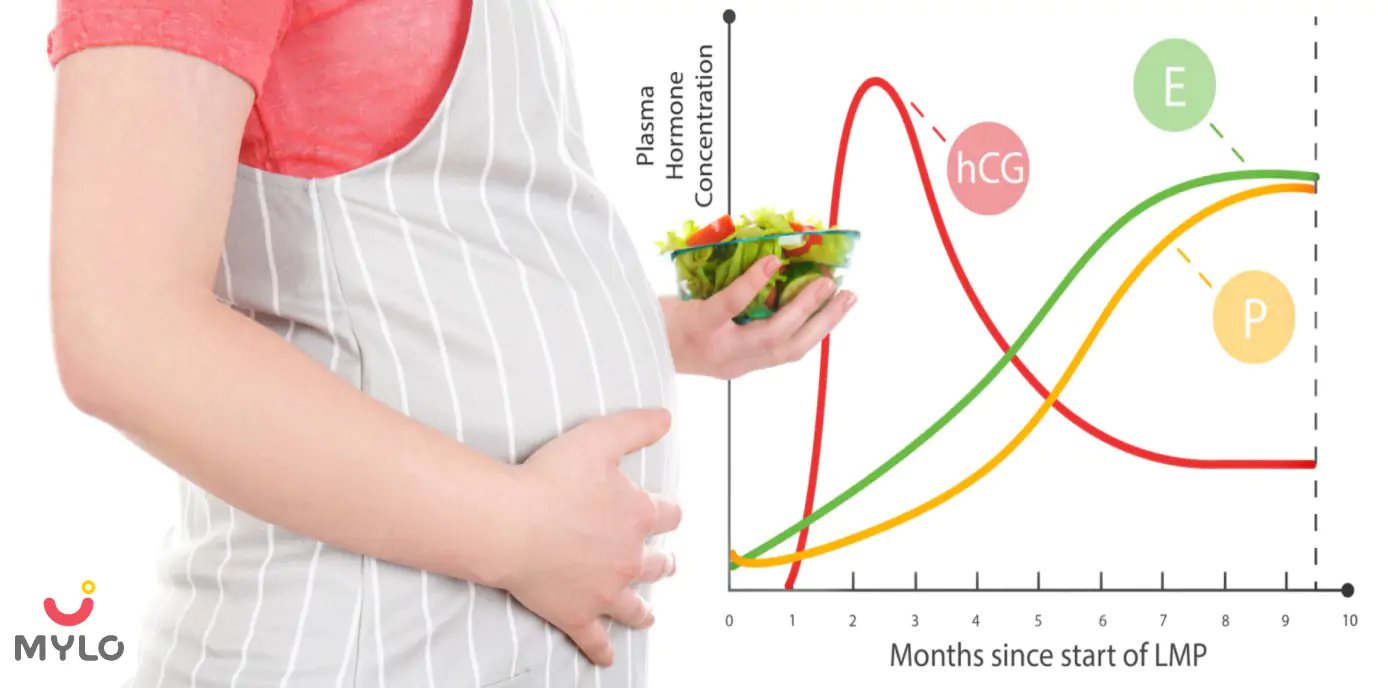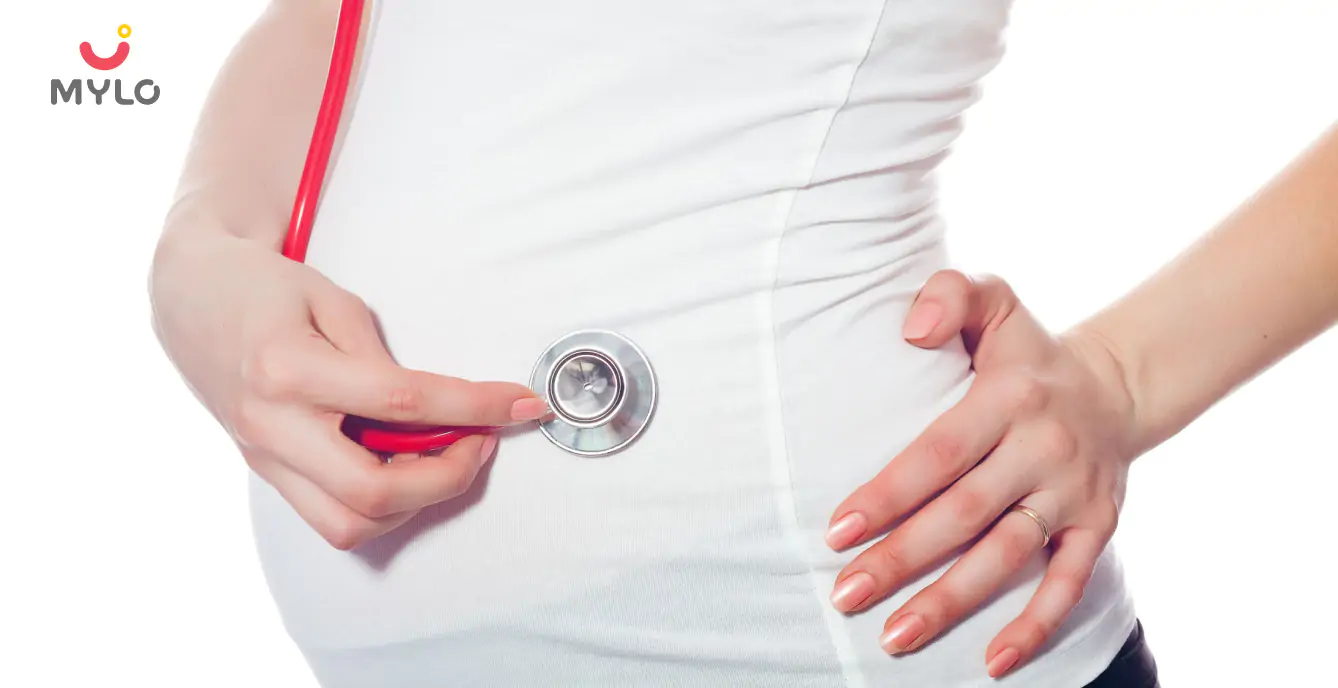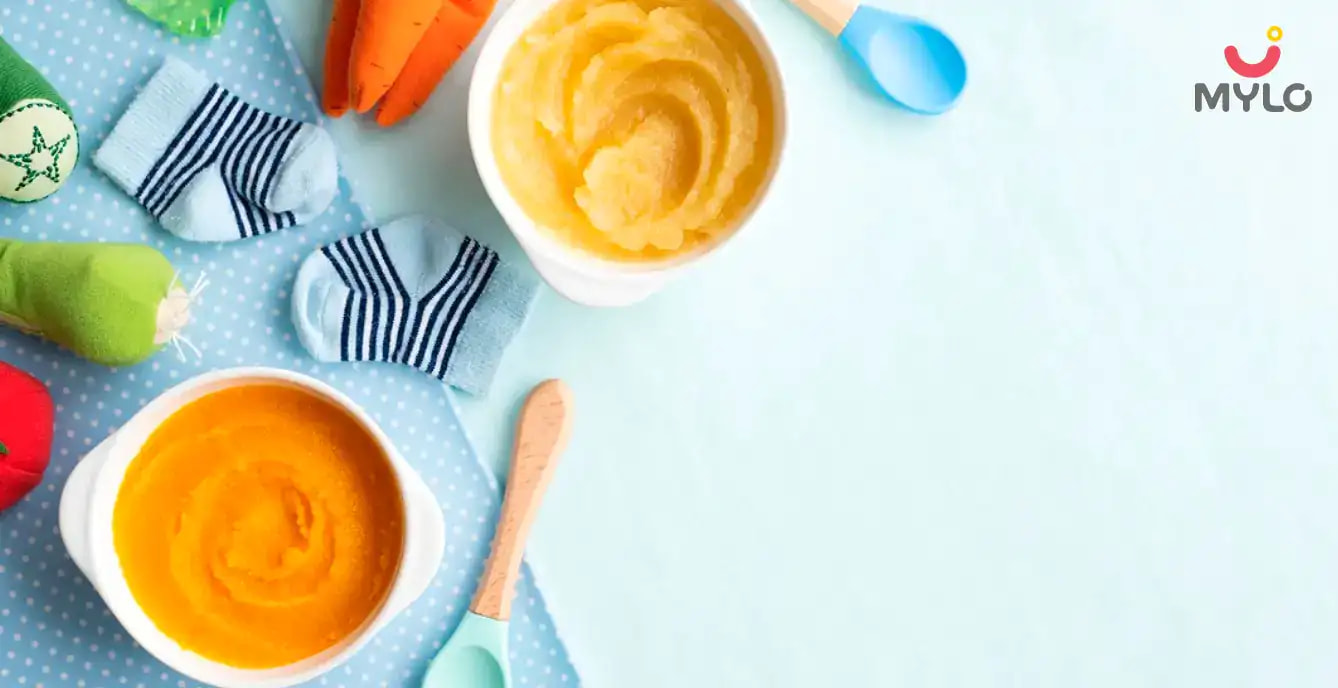Home

Baby Diet Chart From Birth to 1 Year
In this Article

Baby Care
Baby Diet Chart From Birth to 1 Year
Updated on 11 April 2024
Remember just how careful you were about your diet when you were growing a life in your womb? Now that you have welcomed your baby into the world, don’t give up on their nutrition and wellbeing. The first year of life is especially crucial for babies and providing the right diet during this time is essential for their growth and development. Following a baby food chart can help you lay a healthy foundation for the rest of your baby’s life.
While it is recommended to exclusively breastfeed the baby during the first six months, seventh month onwards you can introduce them to solid foods and continue breastfeeding. This article will be your comprehensive guide to feeding your little one, where we will discuss what food to offer, in what quantity and the benefits to expect.
We will also share a 0 to 6 months baby food chart, 6 month baby food chart, and 6 to 12 months baby food chart.
What are the Benefits of Following a Baby Food Chart?
If you are confused about following a baby food chart, then the below mentioned benefits will help you navigate the road to healthy baby feeding:
1. Nutrient-dense recipes
A baby feeding chart prioritizes nutrition and includes recipes rich in essential vitamins, minerals and proteins for optimum growth and development of the baby. You can save a lot of time as now you don’t have to check and calculate the nutritional value of baby meals.
2. Introduction to new foods
A baby diet chart is designed so that baby is introduced to different food items daily to avoid boredom. You can try new recipes and your baby can explore various flavors and textures while treating his/her taste buds.
3. Supports healthy digestion
A well-planned and structured chart will support your baby’s still developing digestive organs and avoids abdominal discomfort, gas, bloating or constipation. The recipes listed are easy on the tummy and can be prepared quickly.
4. Nurturing healthy food habits
Habits shape the future, so introducing nutritious foods at the appropriate time serves as a steppingstone in building healthy food habits that will continue till later stages.
5. No last-minute hustles
Following a food chart allows you to buy the required fruits or veggies well-in-advance. It makes you more organized and reduces the stress of first thinking about the recipe and then collecting the ingredients.
Take our word, following baby food chart will serve as an excellent guide in your parenthood journey. It will not only reduce the stress of searching for nutrient-rich recipes but will also help to make you a happy mom!
You may also like: Is Baby Ready for Solid Foods? (Developmental Signs of Readiness)
0 to 6 Months Baby Food Chart
|
Age |
Quantity of Milk |
Frequency |
Solids |
Type |
|
Birth till first 2 weeks |
15-20 ml of milk in each feed during the initial few days, then approximately 60-80 ml |
Every 3 hours |
NA |
Breast feed or Formula milk |
|
2 weeks to 2 months |
60-120 ml |
Up to 8 to 12 times every day |
NA |
Breast feed or Formula feed |
|
2-4 months |
120-180 ml |
Around 6 to 8 times every day |
NA |
Breast feed or formula feed |
|
4-6 months |
120-240 ml |
Around 5 to 6 times every day |
NA |
You can start solids if the baby can hold its neck and is at least 5 kg in weight. |
You may also like: Breastfeeding and Formula Feeding Schedules
6 to 12 Months Baby Food Chart
|
Food Items |
6 months |
7 months |
8 months |
9 months |
10-12 months |
|
Milk (breast feed or formula milk) |
4 to 6 feedings every day |
3 to 5 feedings each day |
3 to 5 feedings each day |
3 to 5 feedings each day |
3 to 4 feedings each day |
|
Dried baby cereal with iron |
3 to 5 tsp of single grain baby cereal fortified with iron |
3 to 5 tsp of single grain baby cereal fortified with iron
|
5 to 8 tsp of single grain cereal mixed in formula milk |
5 to 8 tsp of mixed grain baby food |
5 to 8 tsp of mixed grain baby food |
|
Fruits |
1-2 tsp of fruit juice 1-2 times every day. |
2-3 tsp of fruit juice 2 times every day |
2 to 3 tsp of fruit juice or mashed fruits twice daily |
2 to 4 tsp of fruit juice or mashed fruits twice daily |
2 to 4 tsp of fruit juice or mashed fruits twice daily |
|
Veggies |
1-2 tsp soft and mashed veggies 1 to 2 times every day |
2-3 tsp soft and mashed veggies 1 to 2 times every day |
2-3 tsp soft and mashed veggies twice every day
|
2 to 4 tsp soft bite sized twice every day |
2 to 4 tsp soft bite sized twice every day
|
|
Meat and Proteins |
1 to 2 tsp strained twice every day |
1 to 2 tsp strained twice every day |
1 to 2 tsp strained twice every day
|
2 to 3 tsp tender, chopped meat twice daily |
2 to 3 tsp tender, chopped meat or mild cheese twice daily
|
|
Snacks |
Cookies, toast, crackers |
Cookies, toast, crackers and plain yogurt
|
Cookies, toast, crackers, plain yogurt, mashed potatoes
|
Finger foods, bread, mashed potatoes, yogurt |
Finger foods, bread, mashed potatoes, yogurt, pudding, ice cream |
|
Development |
Initially the consistency of baby foods is very soupy and thicken gradually |
Introduce finger foods |
Decrease milk intake and increase solids |
Give a variety of foods |
Baby can feed himself/herself with baby spoon and cups |
You may also like: Baby Feeding: How Much & How Often Should You Feed Solids to Your 6-Month-Old Baby?
Foods to Include in 6 Month Baby Food Chart
Now that your baby is 6 months old, you must be excited to start solids. It is important to remember that the baby’s digestive system is still developing and needs time to adjust to a whole variety of baby foods. You should also take baby steps while introducing solids to your little munchkin and never force feed your baby. Your 6 months baby food chart may include the following food items:
-
Rice cereal
-
Moong dal soup
-
Suji upma
-
Mashed banana
-
Apple puree
-
Carrot puree
-
Mashed Sweet potatoes
-
Ragi porridge
-
Pumpkin puree
-
Pear Juice
Let’s move on to check how your 7 month baby food chart looks like!
Foods to Include in 7 Month Baby Food Chart
At 7 months, you can try a new variety of foods of different flavors and textures. Your baby’s developing digestive system is now expecting some nutritious and healthy delights. Let’s go straight to the food items that can be included in the 7 month baby food chart:
-
Banana rice cereal
-
Apple suji upma
-
Dal soup
-
Mashed Carrot and potato
-
Khichdi
-
Porridge
-
Meat
-
Cheese
-
Ragi dosa
-
Oatmeal porridge
You may also like: Feeding Tips and Healthy Food Ideas for Your 7-9 Month Old Baby
Foods to Include in 8 Month Baby Food Chart
Your baby is learning new things each day whether mastering the art of flipping or speaking their first words. Babies are busy during the first year of life, so it is important that they get the right nutrition that supports their overall development. Check 8 month baby food chart for ultimate guidance:
-
Khichdi with mashed vegetables
-
Suji upma
-
Ragi Idli
-
Chicken or vegetable soup
-
Banana rice kheer
-
Mashed vegetable daliya
-
Lentil soup
-
Suji kheer
Foods to Include in 9 Month Baby Food Chart
If your baby is already 9 months and you are looking for 9 months baby food chart, then scan the lines below for some excellent options:
-
Vegetable pulao with dahi
-
Vegetable khichdi with curd
-
Curd rice
-
Oats porridge
-
Soft chappati mashed in dal
-
Chicken broth
-
Idli
-
Dosa
-
Daliya kheer
-
Vermicilli kheer
You may also like: 9 Month Old Baby Food Chart/Meal Plan
Foods to Include in 10 Month Baby Food Chart
You can already notice that now your baby has some preferences. You can pick the items he/she enjoys and can give a slight twist to not-so-favorite dishes. Your 10 month baby food chart can include the following items:
-
Besan chilla
-
Mashed potato and paneer patty
-
Soft chapati and dal
-
Vegetable pulao with curd
-
Mashed black gram
-
Boiled and mashed chickpeas
Foods to Include in 11 Month Baby Food Chart
Currently, your baby is learning to stand independently and walk with support, so make nutrient-dense recipes for your little one. Baby muscles are gaining some strength and therefore it's important to keep the proteins as a priority while also focusing on other macronutrients, vitamins and minerals. Some food items that can find their way to 11 month baby food chart is:
-
Spinach and dal curry
-
Carrot juice
-
Beetroot chilla
-
Paneer fingers
-
Spinach puri and mashed potato
-
Moong dal chilla
-
Dosa
-
Chicken broth
-
Vegetable soup
-
Chapati and dal
You may also like: How to Gradually Incorporate New Food Items into Your Baby’s Diet?
Foods to Include in 12 Month Baby Food Chart
Congratulations, as your baby has just blown out the candles and is ready to explore some healthier food items. Your 12 month baby food chart can be a mix of the following food items:
-
Paneer curry
-
Dal and multigrain chapati
-
Besan chilla
-
Vegetable patties
-
Ragi dosa
-
Bread and cheese
-
Avocado sandwich
-
Vegetable khichdi
-
Stuffed roti
You may also like: Top 10 Benefits of Using a Fruit Nibbler For Your Baby
Final Thoughts
The first year of life is the most crucial one as the baby undergoes rapid developmental changes. Therefore, it is crucial to take care of the babies’ growing needs by proving the right mix of nutrients. Baby food charts help you to plan and be more prepared to nurture healthy nutrition and good eating habits amongst the tiny tots. The baby food chart discussed above can be a guiding light in your parenthood journey for the first year.
References
1. Borowitz, S. M. (2021). First Bites—Why, When, and What Solid Foods to Feed Infants. Frontiers in Pediatrics
2. Critch, J. N., Canadian Paediatric Society, & Nutrition and Gastroenterology Committee. (2014). Nutrition for healthy term infants, six to 24 months: An overview. Paediatrics & Child Health



Written by
Madhavi Gupta
Dr. Madhavi Gupta is an accomplished Ayurvedic doctor specializing in Medical content writing with an experience of over 10 years.
Read MoreGet baby's diet chart, and growth tips

Related Articles
Related Topics
RECENTLY PUBLISHED ARTICLES
our most recent articles

A Guide on How to Increase hCG Levels in Early Pregnancy

Fetal Heartbeat
Late Heartbeat in Pregnancy: What Could Be the Possible Reasons?

Postnatal Care
What Is Postpartum Bleeding or Lochia?

IUI Babies vs Normal Babies: Are They Any Different?

Food Cravings
Is it Safe to Eat Pani Puri During Pregnancy?

Scans & Tests
High WBC in Pregnancy (Leukocytes): Symptoms, Causes & Treatment
- Top 10 food items and beverages that one must completely avoid during pregnancy.
- Things Not to Do After Cervical Cerclage for a Healthy Pregnancy
- When to Stop Bending During Pregnancy?
- Pain in Anus During Pregnancy: Your Guide to Causes and Cures
- White Spots on Nipple: Normal or Cause for Concern?
- Blessed with Baby Boy: 50+ Ways to Announce Your Baby's Birth
- Brown Discharge During Early Pregnancy: Understanding the Causes & Next Steps
- When Can I Start Bending After C-Section: Expert Insights on C-Section Recovery
- 18 Foods That Can Cause Miscarriage: A Guide to Avoiding Harmful Foods
- 9 Week Ultrasound: What to Expect & What are the Red Signals?
- Drumstick During Pregnancy: The Ultimate Guide to Benefits & Side Effects
- How to Avoid Pregnancy After Missing Period Naturally?
- 1st Birthday Wishes for Nephew and Niece That Tug at the Heart
- The Ultimate Collection of Baby Boy Names in Telugu


AWARDS AND RECOGNITION

Mylo wins Forbes D2C Disruptor award

Mylo wins The Economic Times Promising Brands 2022
AS SEEN IN
















- Mylo Care: Effective and science-backed personal care and wellness solutions for a joyful you.
- Mylo Baby: Science-backed, gentle and effective personal care & hygiene range for your little one.
- Mylo Community: Trusted and empathetic community of 10mn+ parents and experts.
Product Categories
baby carrier | baby soap | baby wipes | stretch marks cream | baby cream | baby shampoo | baby massage oil | baby hair oil | stretch marks oil | baby body wash | baby powder | baby lotion | diaper rash cream | newborn diapers | teether | baby kajal | baby diapers | cloth diapers |








